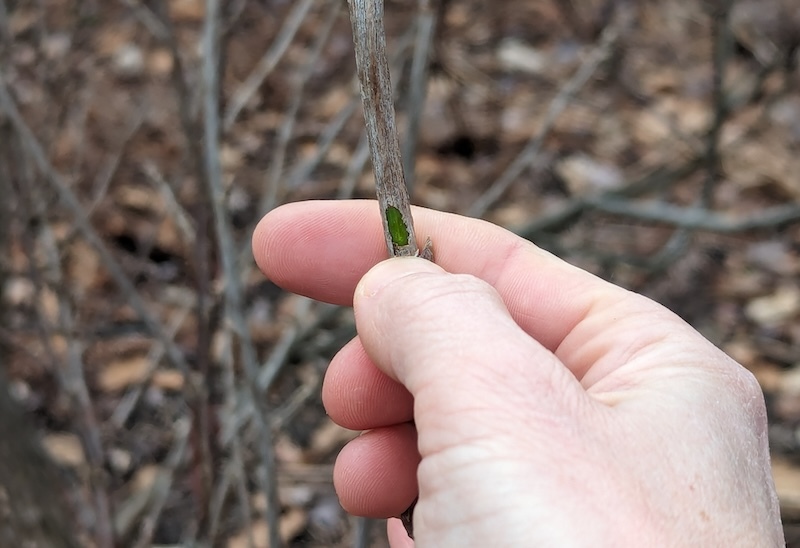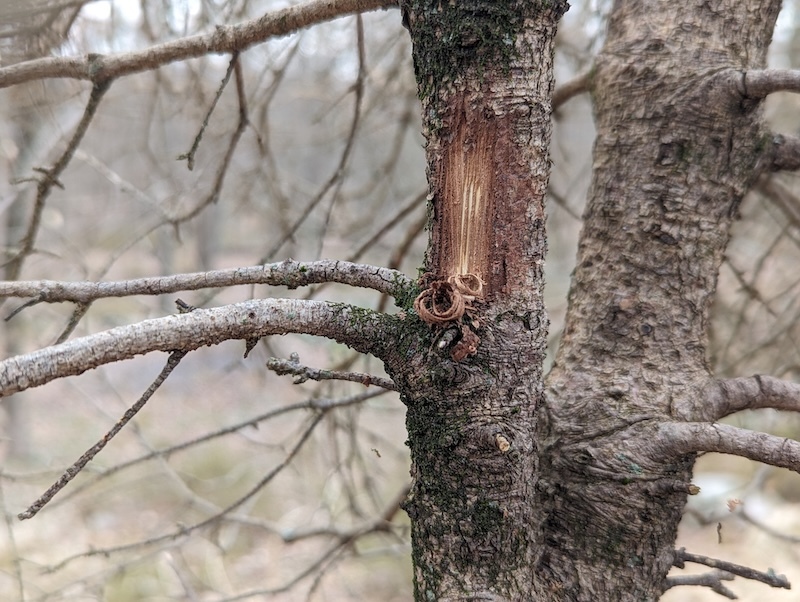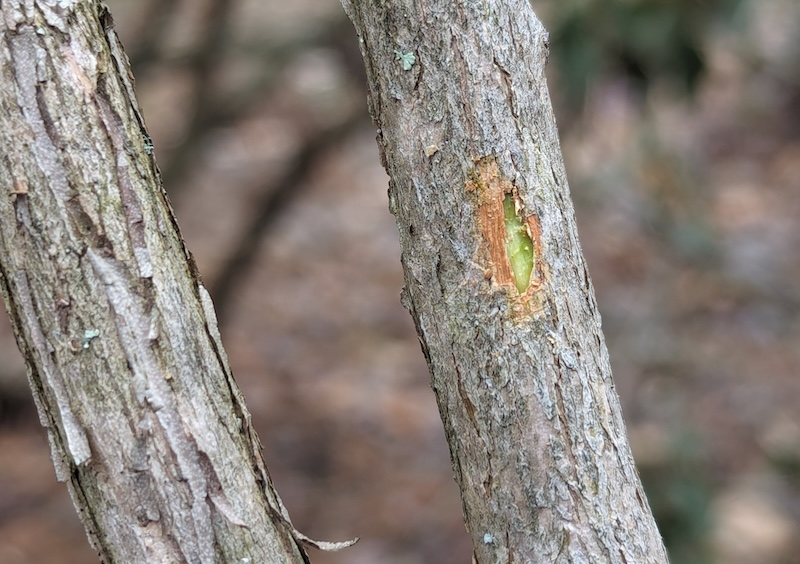Every gardener at some time or another has had a tree or shrub that just wasn’t able to survive a long, cold or particularly stormy winter. As the climate is changing for many parts of the world, unexpected freezes, longer periods of drought, and seasonal flooding are becoming more common and can affect how garden plants perform. Once dependable plants in our gardens may not be able to adapt to the climate shift and may struggle to survive.
Deciduous trees and shrubs can be the most difficult to monitor due to their lack of foliage during the late fall and winter. If you are concerned a plant may be failing or already dead, the number one rule to follow is to WAIT. Do not cut back anything other than obviously damaged branches during the winter or even early spring. Every plant has its own calendar for leafing out and putting on new season growth. Waiting for that time can mean the difference between a prized shrub making a full recovery or meeting its demise in a compost bin.
3 Easy Steps
1. Select a branch on the shrub that appears dead.
2. Use a fingernail or knife to scratch through the bark.
3. Underneath the bark you'll find the cambium; if the plant is alive it will appear greenish.
Note: This is only for woody plants. Herbaceous perennials and other plants will not behave this way.

Common Reasons Why Woody Plants Fail
There are many reasons why trees and shrubs fail in the home garden. Many times it is a matter of poor timing. Planting a shrub too late in the fall will not allow it to develop enough roots to support it through the winter. Alternatively, planting a shrub late in the spring may cause undue stress on the plant when high summer temperatures or seasonal drought hit. Very large trees and shrubs take longer to settle in than smaller-sized plants, making them less likely to survive an exceptionally harsh winter.
Cultural problems can also cause plants to fail. If the plant does not receive the right amount of light, moisture, or acidity in its location, it is not likely to thrive. It may survive for a few more years, but its health will decline over time, making it more susceptible to pests, diseases, and winter damage. Trees planted too deep (so that the root flare or union graft is buried in soil) may also seem to grow well for some years before they eventually succumb after one dry summer or an extremely cold winter. Always mulch the root zone of the tree, not the trunk, to prevent development of rot. Remember: “bagels”, not “volcanos” when mulching around trees and shrubs.
Shrubs and trees growing in containers are more susceptible to extreme weather fluctuations. Pots have far less soil to insulate delicate root systems from freezing and thawing or intense summer heat. When selecting trees and shrubs for pots, a good rule of thumb is to pick varieties that are 1-2 zones hardier than your zone. For example, in USDA zone 8, select a Japanese Maple that can tolerate winter temperatures as low as those in Zone 6 with no protection. Of course, you can move the pot to a protected location in the winter if it isn’t too large. An unheated greenhouse, unheated garage, or carport is often a safe location.
Trees and shrubs damaged by mammals or insect pests may also have a rough time in the winter. Plants can usually recover from light deer browsing, but severe damage from rutting against a tree trunk, stripping of bark by deer or rabbits, or feeding on superficial roots by voles can make plants sick over time, resulting in certain death.

Using a knife to remove the bark on a spruce tree shows the inner tissue is dead.
Common Signs That Your Woody Plant Is Dying
So how can you tell if your woody plant is alive or dead? There are obvious signs of decline such as leaves not budding at the expected time in the spring. Or buds may form but seem to dry up and fall off the plant. You may also observe a decline in canopy growth with many branches starting to lose foliage earlier in the summer. The ends of stems may appear bare with no new leaf or flower buds present. Also look out for stems and branches that are not flexible and snap off easily. All of these clues suggest the plant is in decline and possibly far beyond help.

Dead hibiscus branch snaps off easily
What Is The Scratch Test On A Tree?
The easiest way to determine if your tree is still alive is to perform a scratch test. A scratch test involves gently removing a small part of the outer bark to see if the inner bark is a shade of green. Use a fingernail or a garden knife to scrape a very thin outer layer away. Make sure not to cut into the inner layers of the branch or stem. Test a branch just down from where you suspect winter damage. If there is green, the tree is likely to recover on its own time. If the inner tissue appears tan or darker colored and feels corky, the branch is dead and can be pruned away until you reach green, healthy tissue. The same test can be performed on the trunk of the tree, closer to the soil, if the upper branches appear dead.
What Is The Scratch Test On A Shrub?
The scratch test is essentially the same for a shrub as it is for trees. Begin by testing individual stems that may not look healthy. Scratch away some of the outer bark and look for shades of green, indicating living tissue. Prune away branches that are brittle and dead to improve the overall health of a shrub. Keep in mind that many shrubs grow by sucker growth and send up new shoots to replace older stems as they die. The older growth is not a sign that your shrub is in trouble.

Scratch test on the lower trunk of a blueberry bush. Several layers had to be scraped away to find green tissue.
When To Do The Scratch Test?
Doing the scratch test too early in the winter or spring is not recommended. Scratching the bark exposes the inner tissue to cold, wet conditions, along with pests and diseases. Give your plant time to leaf out or flower at its normal time. If the plant still appears in bad shape, perform the scratch test and determine which parts of the plant are alive.
What To Do If The Plant Is Dead?
Knowing the exact cause of plant death helps know how to handle the removal and replanting of another tree or shrub. If the cause was a disease such as Anthracnose, Phytophthora, or Verticillium wilt, remove as much of the plant from the soil as possible, including the root system. Dispose of the dead plant in your community's green waste disposal or the trash bin. Home composting rarely reaches the temperatures needed to destroy harmful pathogens during the decomposing process. Only replant a tree or shrub proven to be resistant to the same diseases.
A woody plant that dies from overexposure to high winds and cold temperatures in the winter can be removed and replaced with a similar plant. If a tree or shrub dies from being too wet, too dry, or in too much sun, research which alternative plants would thrive in those conditions.
 |
Author Robbin Small - Published 4-21-2024 |
